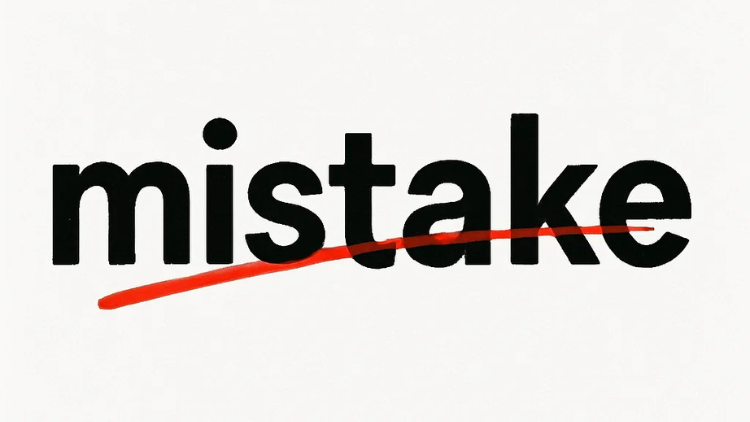You did it. You followed the strategies, you used the right cards for the right purchases, and you’ve built up a massive balance of credit card points.
Seeing that six-figure number in your account—brimming with the potential for adventure—is an amazing feeling. The hard work of earning is over.
But now comes the most critical step: redeeming those points.
This is the moment where all your savvy earning can be instantly wiped out by a single, convenient, but ultimately terrible redemption.

The banks make it easy to make low-value choices, and millions of points are wasted every day.
You’ve worked too hard to let your points go to waste. You earned them to fund a real, valuable vacation, not to get a tiny discount on a toaster.
This guide is for everyone who has earned their points and wants to make sure they get the free vacation they deserve. I’m going to reveal the five biggest redemption mistakes I see people make and show you the smart alternatives that will protect the value of your rewards.
Mistake #1: Redeeming Travel Points for Cash Back
You see your 100,000 American Express® Membership Rewards® points and notice an option to get a statement credit. It’s tempting—instant cash! But it’s also a trap.
- Why It’s a Mistake: Flexible travel currencies (like Amex Membership Rewards or Chase Ultimate Rewards) almost always give you a terrible value when redeemed for cash back, often as low as 0.6 cents per point. That means your 100,000 points might only get you $600.
- The Smart Alternative: If your primary goal is cash back, you should be using a dedicated cash back credit card. Save your premium travel points for their intended purpose: travel. Those same 100,000 points could be transferred to an airline for a business class flight worth $3,000 or more.

Mistake #2: Using the ‘Shop with Points’ Feature for Merchandise
The rewards portal is filled with shiny objects—new headphones, a kitchen mixer, the latest iPhone. Paying for them with points feels “free,” but it’s one of the worst deals in the rewards world.
- Why It’s a Mistake: Redeeming points for merchandise or gift cards typically gives you a value of less than 1 cent per point, and sometimes as low as 0.5 cents per point. You would be far better off paying for that item with a good cash back card and saving your points for a higher-value redemption.
- The Smart Alternative: Pay for products with cash or a cash back card. Your points are a high-powered currency; don’t trade them for pennies on the dollar.
Liam’s Insight: I think of my points like different types of tools. My cash back is my trusty hammer—simple, reliable, and good for lots of jobs. My Amex and Chase points are my power tools—they are capable of doing amazing things, but you have to use them for the right project. Using Amex points to buy a toaster is like using a power saw to cut a piece of paper. It works, but you’ve wasted all of that incredible potential.
Mistake #3: Transferring Points Before Finding Award Availability
You know that transferring points to an airline or hotel partner is the key to high value, so you speculatively move 50,000 points from your bank to an airline to “get them ready” for a future trip.
- Why It’s a Mistake: Point transfers are a one-way street and are almost always irreversible. If you move your points and then discover the flight or hotel you wanted isn’t available, your points are now stuck with that single airline or hotel, stripped of their valuable flexibility.
- The Smart Alternative: Always follow the golden rule of transferring: Search, then transfer. Go to the airline or hotel website first, find the exact award seat or room you want, and confirm it’s available. Only then should you go back to your bank’s portal and transfer the exact number of points you need to book it.

Mistake #4: Using Points for a Cheap Domestic Flight
You find a great round-trip flight from New York to Miami for only $250. You log in to your travel portal and see you can book it for 20,000 points. Seems like a good deal, right?
- Why It’s a Mistake: While this gives you a decent value (1.25 cents per point), it’s often a poor use of a high-value currency. You are using your “five-star” points on a “two-star” redemption. Those 20,000 points could be part of a much more valuable future redemption, like a luxury hotel stay worth $500 or more.
- The Smart Alternative: For cheap domestic flights, it is often better to pay with cash (using a card that earns a bonus on airfare!) and save your valuable transferable points for aspirational redemptions where the value per point is significantly higher.
Mistake #5: Letting Your Points Expire
This is the most painful mistake of all—letting your hard-earned rewards vanish into thin air.
- Why It’s a Mistake: It’s the equivalent of throwing cash away. While bank points like Chase UR and Amex MR don’t expire as long as your account is open, airline and hotel miles often do expire after a period of inactivity (typically 12-36 months).
- The Smart Alternative: Know the rules. For airline/hotel miles, you just need any activity to reset the clock. You can keep them active by making a small purchase through their shopping portal, using a co-branded credit card once, or even by donating a small number of miles.
Ready to Protect Your Points?
You worked hard to earn your rewards; make sure you get the value you deserve.

The next time you’re ready to book a trip, take a moment to review these pitfalls. By avoiding these common mistakes, you ensure that your points will take you exactly where you want to go: on an incredible, high-value vacation.
Frequently Asked Questions (FAQ)
What is a “cent per point” (CPP) valuation?
It’s a simple formula to measure the value you’re getting from a redemption: (Cash Price of the ticket/hotel) / (Number of Points required to book) = Cents Per Point. A value of 2.0 CPP or higher is generally considered excellent for travel.
Are my credit card rewards taxable?
Generally, no. The IRS typically views credit card rewards earned from spending as rebates, not as taxable income. However, bonuses received for opening a bank account (not a credit card) may be an exception.
Can I book travel for a family member with my points?
In most cases, yes. Most airline and hotel programs allow you to book award travel for anyone you choose. Transferring points to another person’s loyalty account, however, often has more restrictions. Check your specific program’s rules.
WalletAware shares education, not individualized financial advice. Always confirm current terms on the issuer’s site before applying.